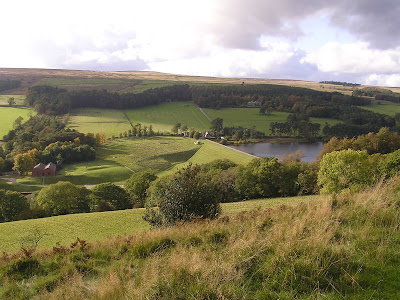Friday 6 November 2020
Blue water at the Tunstall reservoir
Friday 11 September 2020
Colourful Pennan
Pennan is a small fishing village in the coast of Moray, in Scotland. To arrive there we have to drive along winding roads down the hill towards sea level. The colourful houses are exiting and fresh and not grey and boring like the granite and colourless houses in Aberdeen. The village is inspiring as it is by the sea and we can seat in one of the outdoor benches and look for dolfins, seals or seabirds. In the winter, when we mostly visit Pennan, we always try to have food at the Pennan Inn (made famous by the movie Local Hero) but we are usually disappointed by its low season closure. We like to walk to the next village Gardenstown, trying to capture the exquisite decoration of the small houses through their little windows, appreciating their little gardens, and envying the kayaks laying on the sides of some houses, waiting to have some fun at the sea. I usually look up to the imponent Auchmedden Church, placed at a higher point, overlooking the villagers' steps and reminding them not to sin. The village is quiet but gets its portion of weekend visitors and holiday makers. In the late 19th century, the North East was living the herring boom and Pennan was a relatively prosperous and bursting village.












